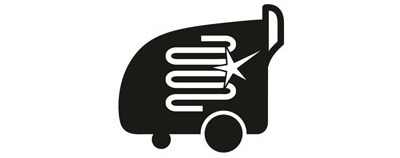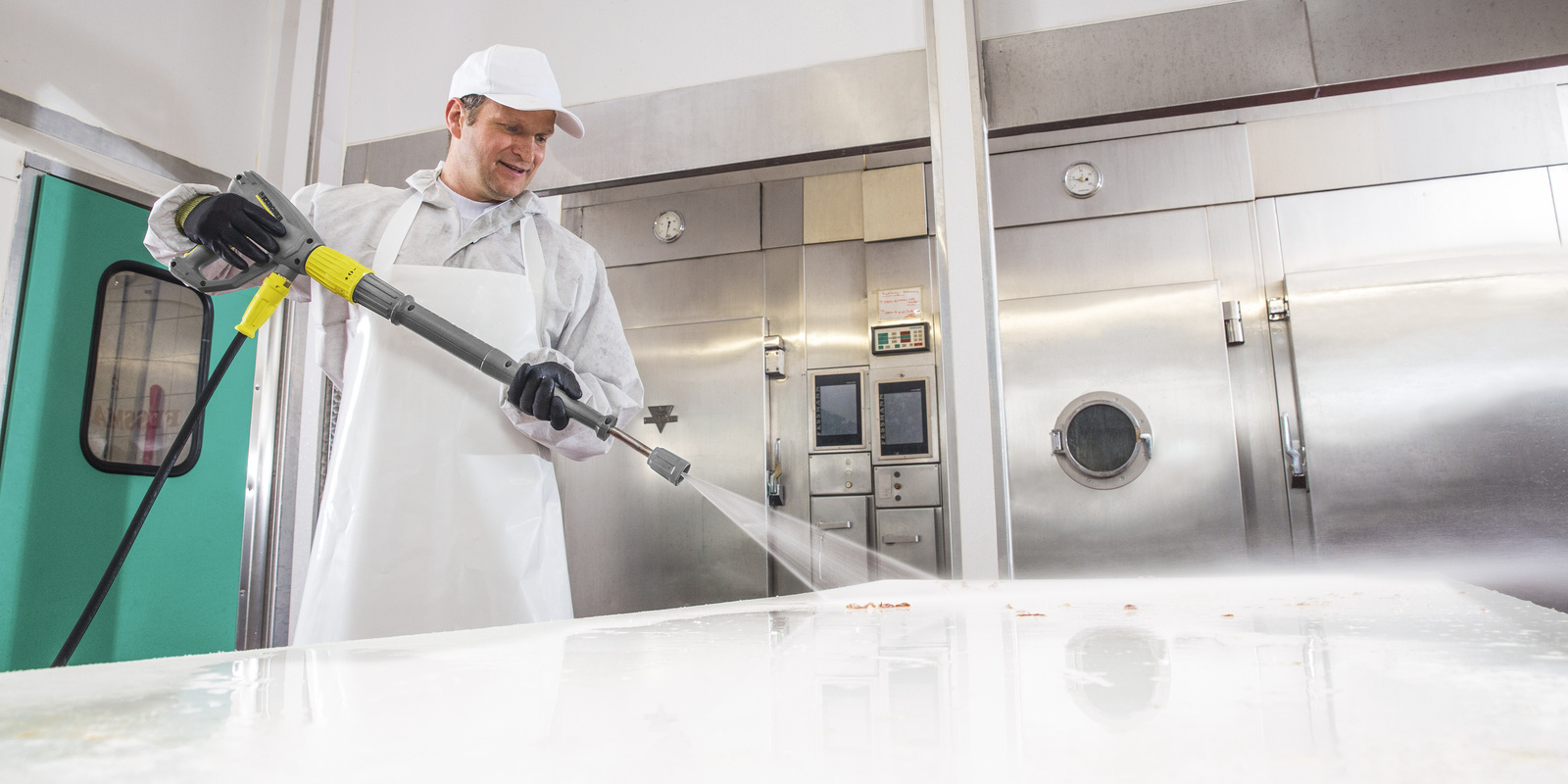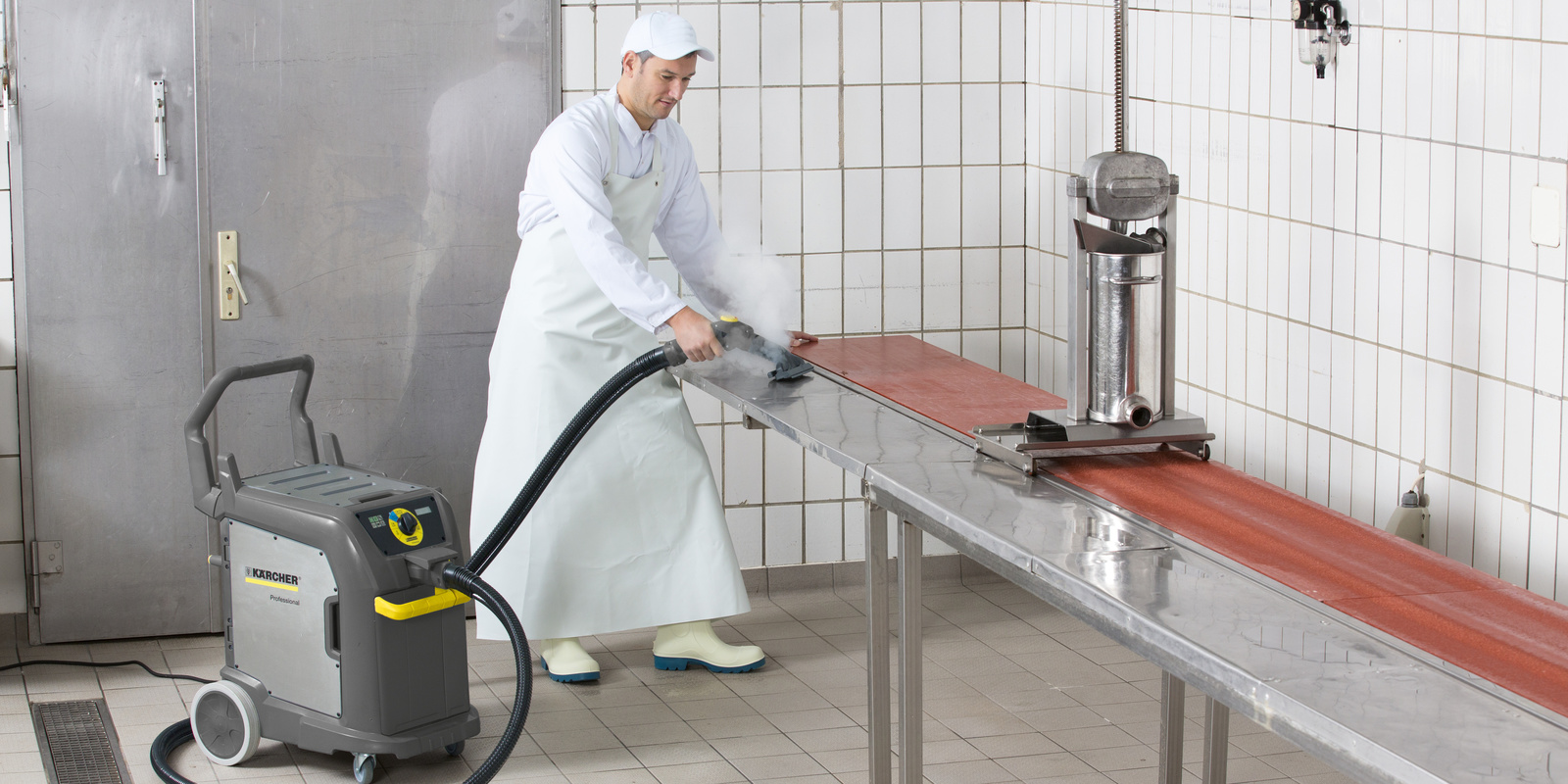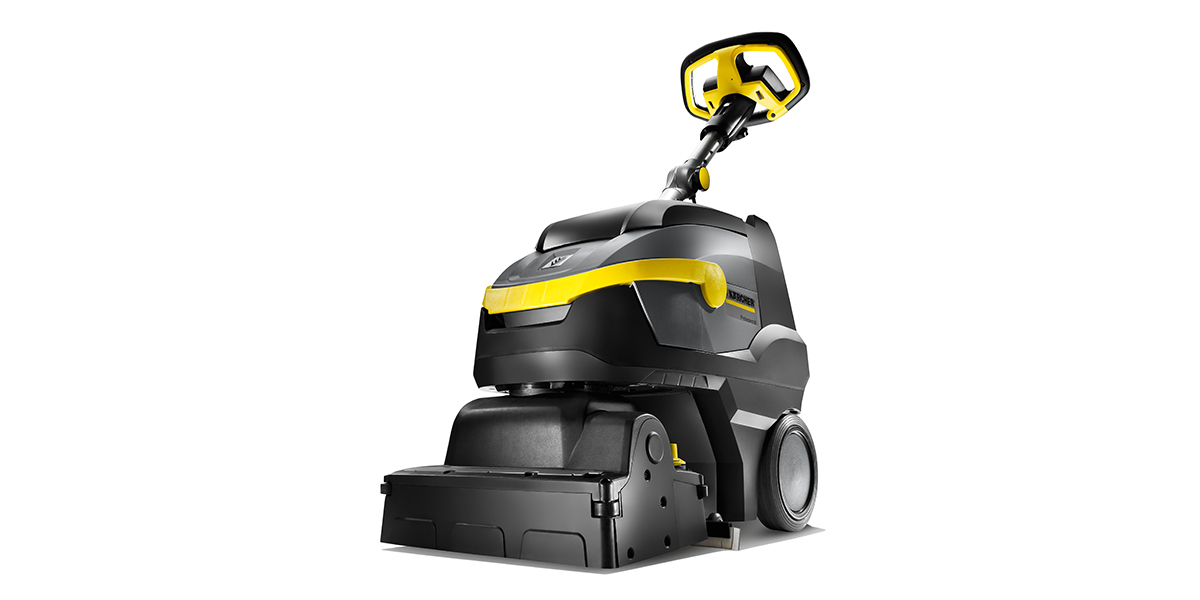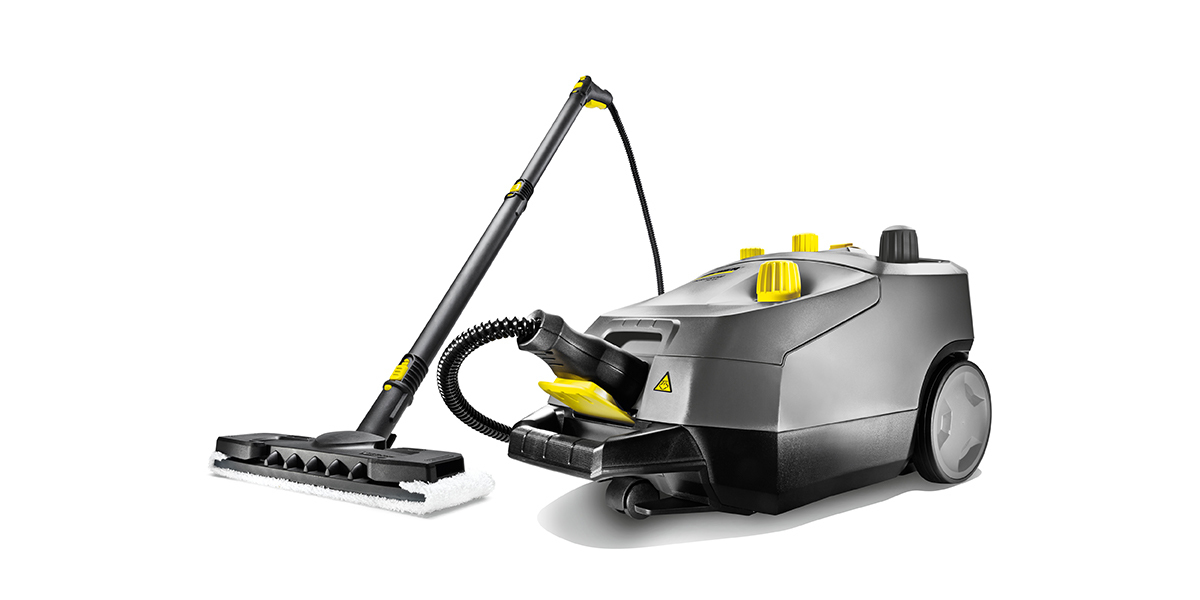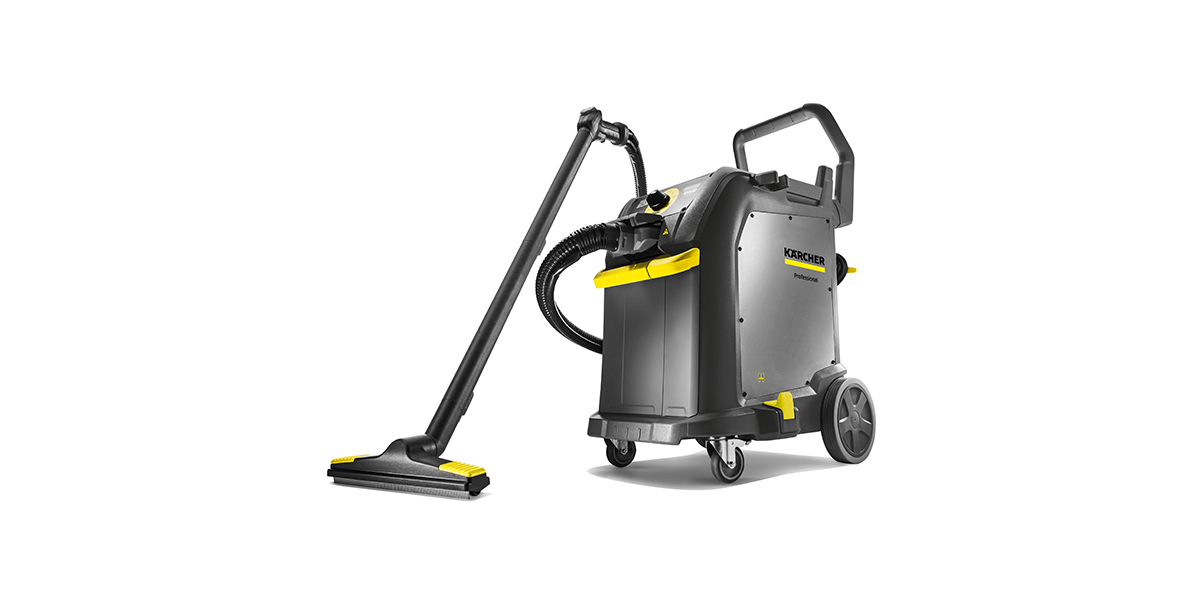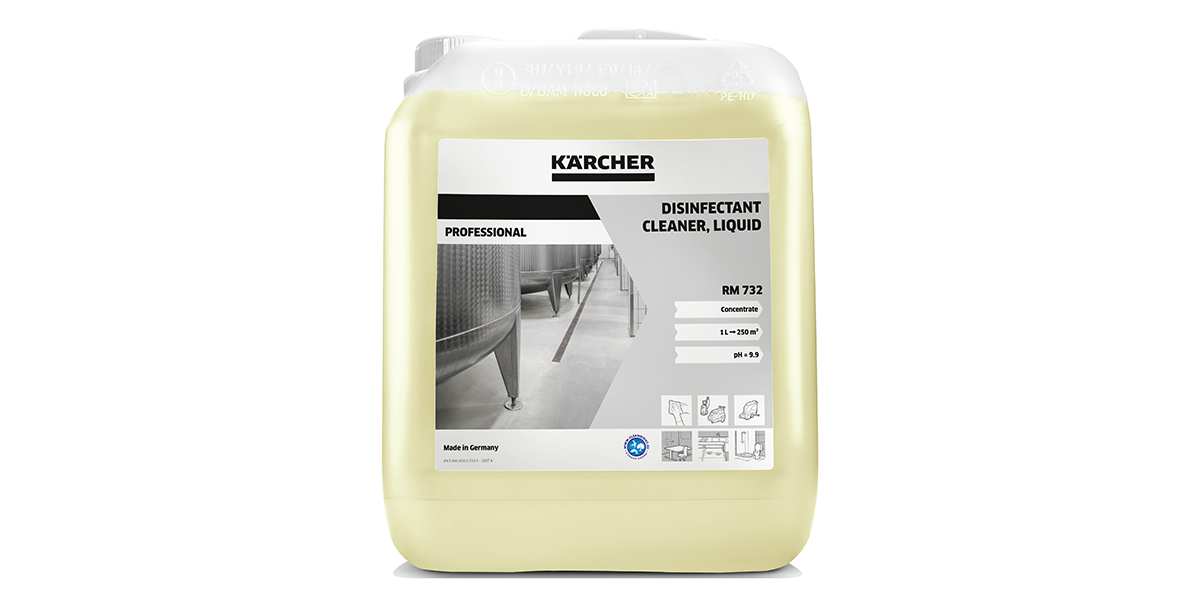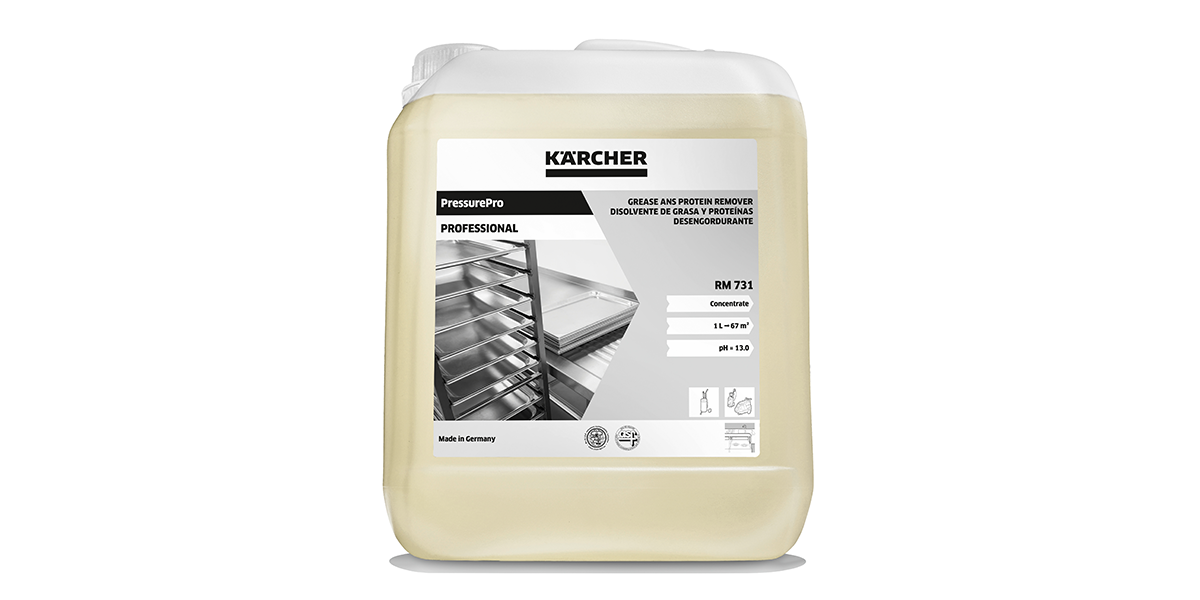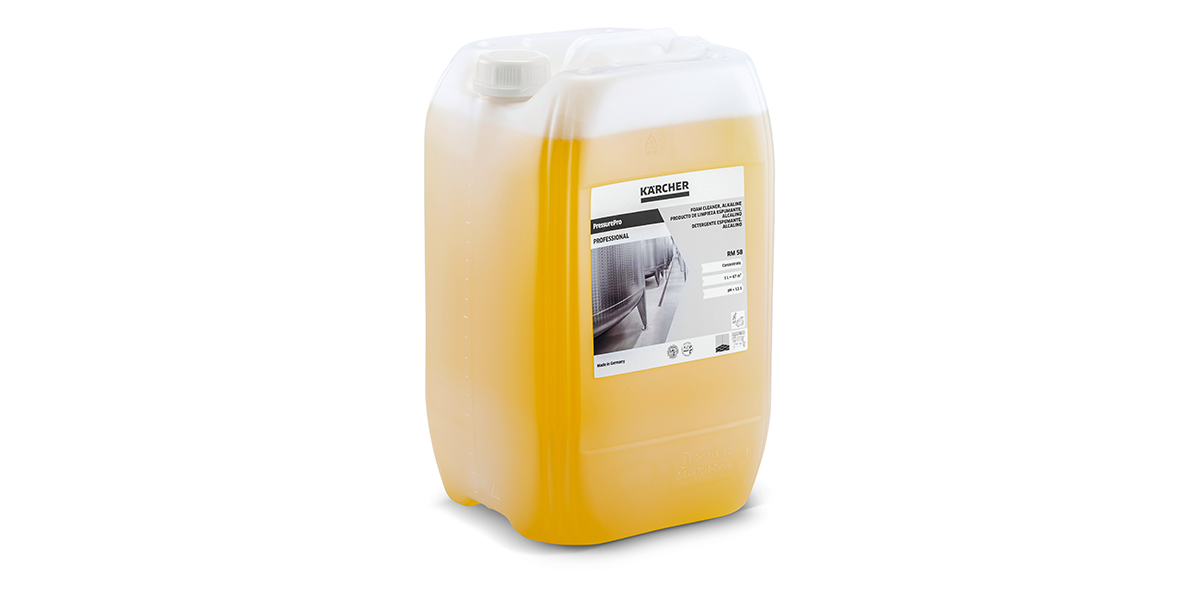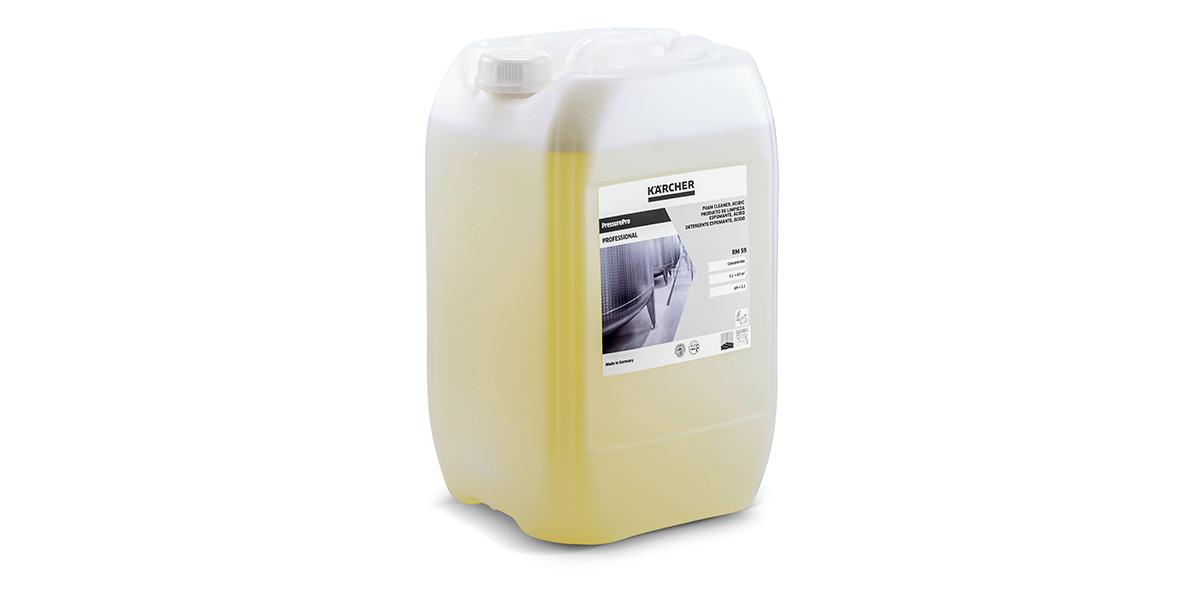Cleaning for butchers
Food processing businesses such as butchers know that cleaning and disinfection tasks must be handled as a top priority. This applies to work surfaces, tools and machines as well as floors in the production and storage areas and cold storage rooms - because the spread of germs could be disastrous. Many tasks can be handled efficiently and conveniently by using high-pressure washers, for example.
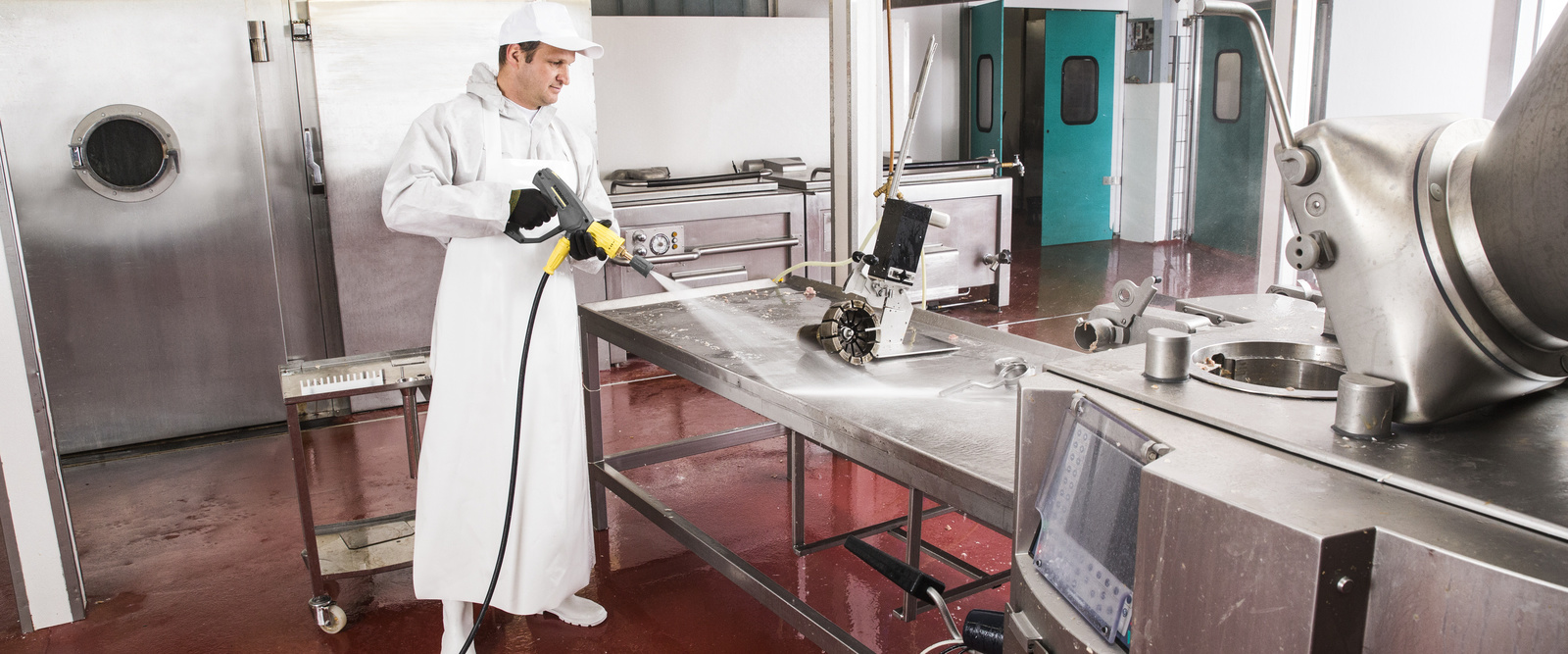
In food processing plants, efficient cleaning and disinfection are top priorities. In butcher stores and small slaughterhouses, just as on farms, contaminants such as blood, proteins and fats, coarse meat waste and bone residues are the main sources of contamination. These must be removed efficiently so that germs have no chance to spread. A clean working environment serves to ensure the quality of the food, protects the health of the consumer, and ultimately the success of the company.
Cleaning in butcher shops: Daily cleaning and disinfection of work surfaces
Tables, cutting boards and storage surfaces used for cutting meat and producing sausages or ready meals, for example, are high touch surfaces and need to be thoroughly cleaned and disinfected many times every day. It is important to work with warm water during the actual cleaning process - pre- and post-rinsing can be done with cold water. A temperature of around 50 to 55 °C is recommended, as the use of warm water as opposed to cold accelerates the cleaning process. In hotter water, however, there is a risk of denaturation of the protein - which means that the residues would not be entirely removed, but instead form a covering layer over the germs.
Advantages of hot water high-pressure cleaners
Cleaning with hot water: High-pressure cleaners clean even better at a constant pressure. Alongside improved results and faster cleaning and drying times, hot water high-pressure cleaners also have a measurable germ-reducing effect. When the steam stage is used, even delicate surfaces can be gently cleaned with temperatures of up to 155 °C. Furthermore, the machines allow for a reduction in the working pressure, the time required and the volume of cleaning agent that is used. This means that cleaning with hot water offers a number of advantages and various possibilities for optimising the cleaning process.
Intensive foam cleaning for boards and tables
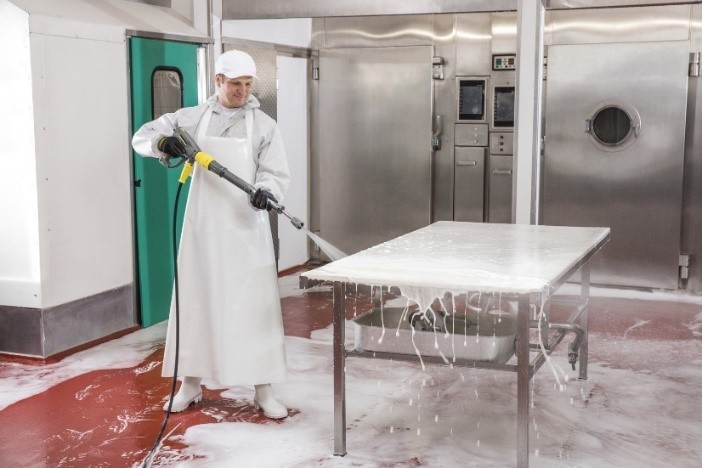
The work tables for cutting and processing meat are usually made of stainless steel, while the cutting boards are usually made of plastic. Cutting directly on the stainless-steel surface would quickly blunt the knives. The boards unfortunately bring with them extensive hygiene considerations. When viewed under a microscope, boards that have been used only a few times already have several crater-like dents. This is where germs nest. To reach and remove these germs from even the deepest craters, cleaning with a foam system is recommended. This is because foam has particularly good cleaning properties, a long contact time, and penetrates deep into the structure of the boards. Another advantage is that the user can easily see which areas have already been treated.
The cleaning process itself starts with placing the cutting boards vertically on the worktables - leaning slightly at an angle against a wall or similar behind them. Rinse both the boards and the table surfaces with warm water (set at a low pressure!). Then the foam can be applied - for example with a high-pressure washer and foam lance. An alkaline cleaning agent is recommended for this process so that both fats and proteins are dissolved effectively. Every now and then, it makes sense to switch to an acidic cleaning agent to counteract possible limescale deposits caused by the high volume of water. In addition, a regular change in cleaning agent has a positive effect on the life of the materials cleaned. The cleaning agents used in a butcher’s must be suitable for use in the food sector. After the appropriate exposure time, the foam should be rinsed off thoroughly and the surfaces should then be dried well. Importantly, the water used for the cleaning process must come from a potable water source.
Cleaning at the butcher’s: Disinfection of work surfaces and tools
After the surfaces are dry, disinfection follows. The aim is to eliminate pathogenic microorganisms completely or to reduce them so that the remaining quantity is not hazardous to health. Which disinfectants are used for this purpose must be decided individually and varies from region to region. Agents based on chlorine or QAV (quaternary ammonium compounds) are often used - dosage and exposure time should be carried out according to the manufacturer’s instructions on the products. In addition, there are combined cleaning and disinfecting agents on the market, which can save one work step. The disinfectants can be applied using accessories for the high-pressure washer.
In addition to the use of disinfectants and disinfectant cleaners, thermal disinfection is also possible. Hot water high-pressure washers effortlessly reach the minimum required temperature of 82 °C to eliminate microorganism growth. Even with contact times of less than one minute, contaminated surfaces are disinfected using the hot water. Thermal disinfection also works using steam cleaners and steam vacuums. These are also suitable for disinfecting machine parts or tools, for example.
Regardless of the method, for an effective cleaning and disinfection plan in a butcher’s shop it is hygienically necessary disinfect surfaces at least once or twice a day depending on the slaughter and processing intervals.
Hygiene: Cleaning butcher’s tools and machines
Knives, tongs and bone saws are just as much part of the standard equipment in a butcher’s store as a meat grinder or meat cutter. These machines are equipped with lots of electronic features and are therefore fairly sensitive. Care must therefore be taken during the cleaning process, both to work gently and to regulate the high-pressure washer to a maximum of 30 to 100 bar pressure. This can be set with a pressure regulator on the spray lance. In this way, knives, saws and tongs, for example, can also be cleaned with reduced pressure - alternatively, these can also be put in a dishwasher. As with the cutting boards and storage surfaces, cleaning and disinfecting tools several times a day is advisable. Furthermore, foam cleaning is preferable. For the cutter, a very short spray lance (max. 10 cm) is suitable for cleaning in order to clean even the hard-to-reach places with ease. As always, the same steps apply to tools and machines, that is rinse, dry, and disinfect.
Cleaning for butchers: Clean floors for a safe working environment
Slippery floors increase the risk of accidents. Particularly in slaughter areas, waste such as fats, proteins and blood contribute to an increased risk of slipping. This risk is reduced by thorough cleaning during butchery, which simultaneously serves to aid occupational safety and hygiene.
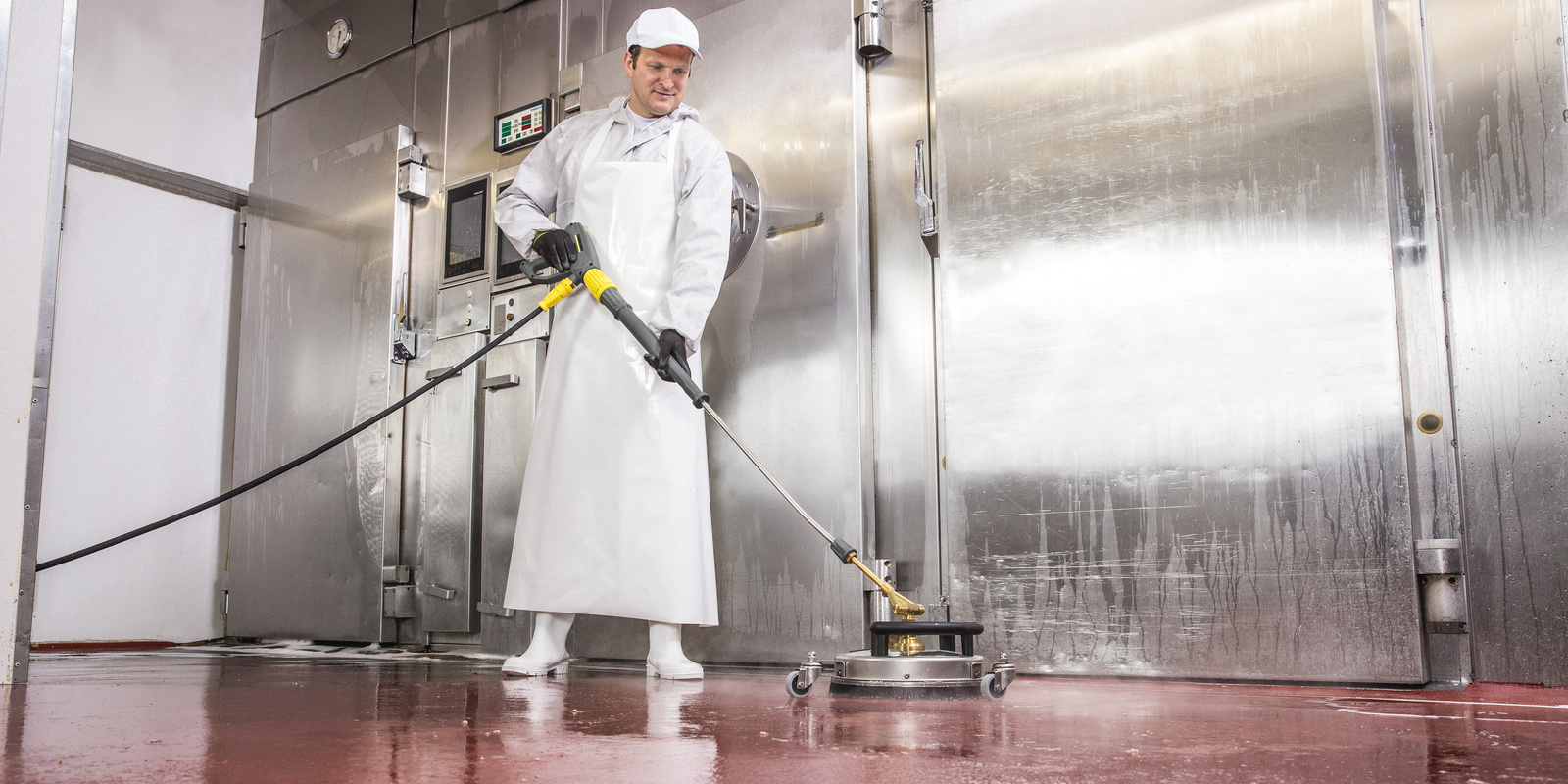
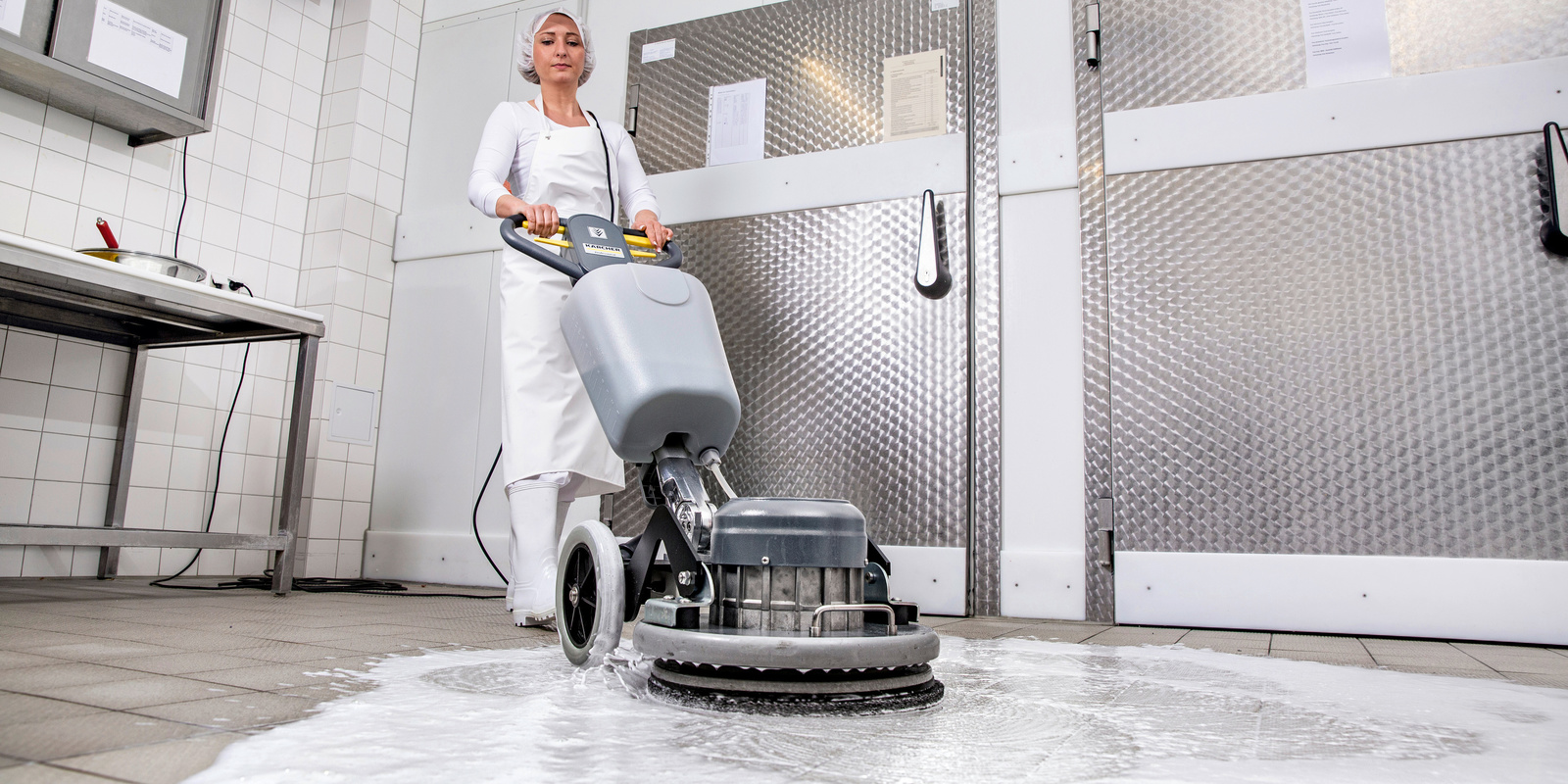
Floor cleaning in the production rooms of a butcher shop
The use of a high-pressure washer is also recommended for floors in combination with a surface cleaner - an attachment with rotating nozzles. The advantage here is that using a surface cleaner means that the cleaning solution and spray of the rinsing water is not distributed over a large area around the work area, but remains concentrated. Cleaning with high-pressure washers is fast, efficient and convenient due to the floor drains that are present in the production areas.
Depending on the working environment it may be possible is the use of a small scrubber-dryer or an oscillating single-disc machine to get the floors clean and safe to walk on. For the coarse mess, equipment with roller brushes is more suitable. To reliably loosen protein residue on the floor, it is advisable to work in a 2-step process - scrub in the 1st step, let the cleaning agent work in for a good 10 to 15 minutes, and then scrub again in the 2nd step and simultaneously vacuum or move the waste toward the drain. However, regardless of whether you use a high-pressure washer, single-disc machine or scrubber-dryer, thorough cleaning (e.g., under running water) and disinfection (e.g., via spray disinfection) of the equipment after use are extremely important to prevent the possible formation of germs and odors.
Cleaning cold storage and storage rooms in the butcher shop
If the refrigerator needs to be thoroughly cleaned, it’ll need to be switched off, otherwise the water used to clean it will freeze. If the room is at normal temperature, a high-pressure cleaner in combination with a surface vacuum cleaner is also suitable for thorough cleaning. The same applies to storage rooms. In this case, a model with integrated vacuuming is recommended, as storage rooms usually lack drains. In addition, the risk of the cleaning solution or water splashing onto the walls or surrounding goods is minimized - and the room can be accessed again quickly. If the storage room has enough space so that the use of a small scrubber dryer is possible, this is also recommended.
Hygiene in cold storage: Cleaning at low temperatures
Cold stores are common in lots of businesses – and they are usually key to a business’ operation. In hotels and restaurants, in industrial production, or in supermarkets, cold stores provide the correct conditions for storing perishable goods and other sensitive items. A cold store requires specialized and professional cleaning that takes into account the specific conditions required by cold storage units.
Overview of cleaning agents in the food sector
Alkaline detergents (pH 8-14) are particularly suitable for use in butcher shops, as they are highly effective against proteins and fats. Alternately, however, an acidic detergent (pH 0-6) should be used to remove mineral deposits or rust that may result from the use of the large amounts of water during cleaning.
Selection criteria for choosing the appropriate cleaning agent in butcher shops:
- Type of contaminant
- Material compatibility
- Applicable mechanics
- Environmental friendliness
- Health safety
Cleaning and disinfection in butcher shops according to the HACCP guidelines
In order to produce hygienically safe food, work areas, storage rooms and cold storage rooms in butcher shops must be kept carefully clean in accordance with the European HACCP directive (“Hazard Analysis Critical Control Points”). Internationally, regional regulations apply accordingly.
Work according to a precise cleaning and disinfection plan for a butcher’s shop
Seeing as the different areas and equipment have different cleaning intervals, a cleaning plan should be created and displayed. This plan could list what (equipment, surfaces, floors), when (after use, daily, weekly), how (cleaning agents and dosage) and who (clear responsibilities) for cleaning a butcher’s shop. Completed work can then be precisely logged and documented in a way that can be tracked easily. In food processing, rinsing with clear water (of potable water quality!) should always be the final step at the end of each cleaning round.
Disinfection: Beware of disinfectant issues with protein, soap and cold temperatures
Once cleaning is complete, the disinfection process begins after the surface or object is dry. This involves chemical and physical processes to kill microorganisms in a way that is neither harmful to health nor affects the quality of the food. During this process it is also important to consider issues with disinfecting proteins, soaps, and at cold temperatures. For example, chemical disinfectants may have a reduced effect in the presence of materials containing proteins. This is because certain disinfectant agents react with the proteins of microorganisms, and also with those of food. In other words, they compete. Therefore, the concentration of the disinfectant should be varied, and acidic and alkaline cleaning agents should be used alternately. Surfactant residues, such as soap from detergents, can react with some disinfecting agents, rendering them ineffective. In the case of issues due to the disinfectant solutions being at too low a temperature have a negative effect on the disinfection process, because chemical and physical processes can slow down and so the efficacy of the disinfection decreases.

